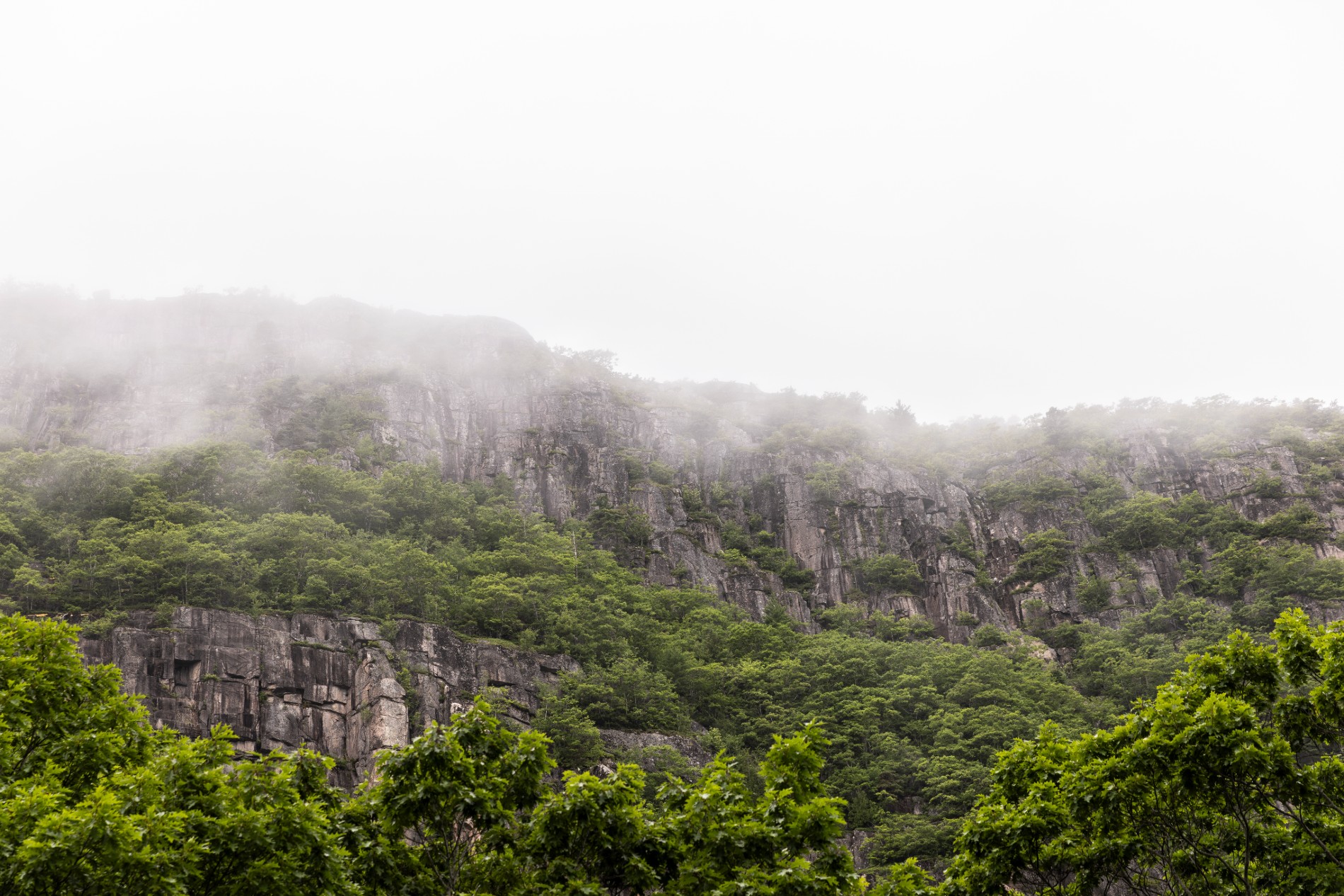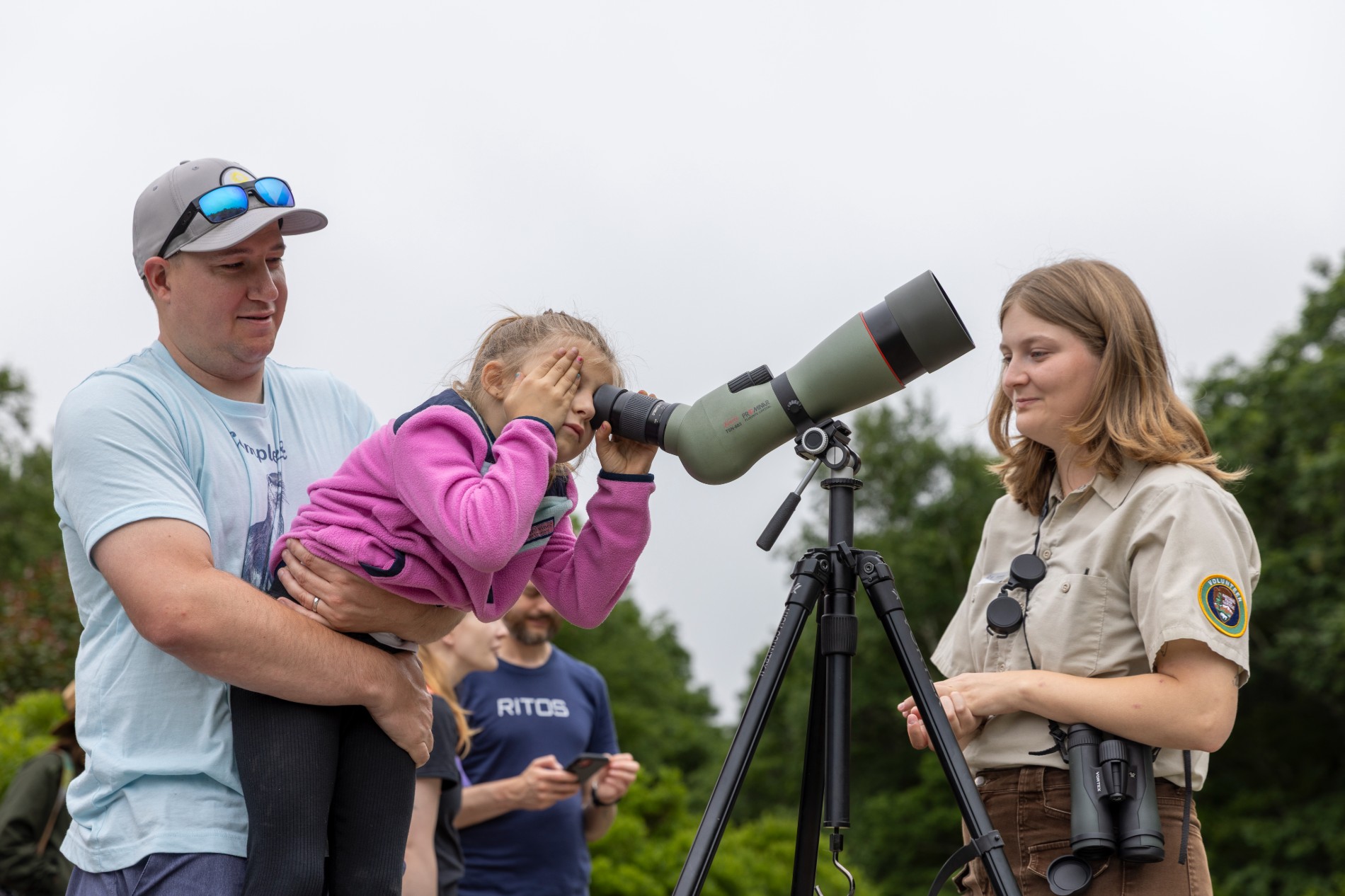Enraptured by Raptors
Acadia’s Peregrine Falcon Watch program invites the peregrine-curious to peer through telescopes to spot peregrines on the cliffs.
August 7th, 2025
Acadia’s Peregrine Falcon Watch program invites the peregrine-curious to peer through telescopes to spot peregrines on the cliffs.
August 7th, 2025
Young peregrines are strengthening their wings on the winds over Acadia right now, their practice flights bringing them increasingly farther afield. As adults, peregrine falcons are impressively fast—reaching speeds up to 69 mph when pursuing prey in flight and upwards of 200 mph during a hunting dive, a.k.a. “stoop.”
While trails near the peregrines’ cliffside nesting sites are closed to park visitors this time of year, we’re welcome to peek at their progress every weekday morning during the Peregrine Falcon Watch Program.
Held from 9-11:30 a.m. Monday through Friday in the Precipice Trailhead parking lot, the program invites the peregrine-curious to peer through telescopes to spot peregrines on the cliffs. Park rangers and interns are on hand to help point the scope in the right direction and share their falcon knowledge.
This year, a peregrine pair claimed their spot on the cliff face of Champlain Mountain, right above the Precipice parking lot, and are currently raising up two chicks, a.k.a. “eyasses.”
You can also follow how the peregrines are faring on the park’s website. Jazmine DeBeauchamp, raptor intern at Acadia, shares weekly updates in View from the Aerie.
This year’s chicks are nearly ready to fly, so if you miss the peregrine falcon watch this year, be sure to check it out in future. Later this summer and fall, you can check out the Cadillac Mountain Hawkwatch!

Clouds move over Champlain Mountain. (Rhiannon Johnston/Friends of Acadia)

Park visitors take a look through the telescope to see peregrine falcons up on the cliffs. (Rhiannon Johnston/Friends of Acadia)
Aerie (or eyrie): An aerie can refer to the nest of any large bird of prey, but in the context of peregrine falcons, it specifically refers to their nesting location, since they don’t build traditional nests like many other birds do (more on that below).
Eyas: Pronounced “eye-us,” it refers to a young, unfledged falcon or hawk, still in the nest.
Fledging: This is the stage in a falcon’s life (or any flying animal, including bats) when they’re becoming capable of flight. Beginning in early July and continuing through August, they’ll take practice flights and explore farther afield.
Scrape: “The ledge where they’ve been spending most of their time,” writes Jazmine in the View from the Aerie. “Instead of building what we think of as a bird’s ‘nest,’ peregrine falcons lay their eggs directly on rocky, elevated surfaces to get a good vantage point of prey and protection from predators.”
Strikes: Peregrines typically strike in mid-air, knocking their prey to the ground. Less often, they’ll strike and grab prey and fly away. “These hungry birds are also voracious predators that can fly up to 15 miles to catch their prey,” writes Jazmine.